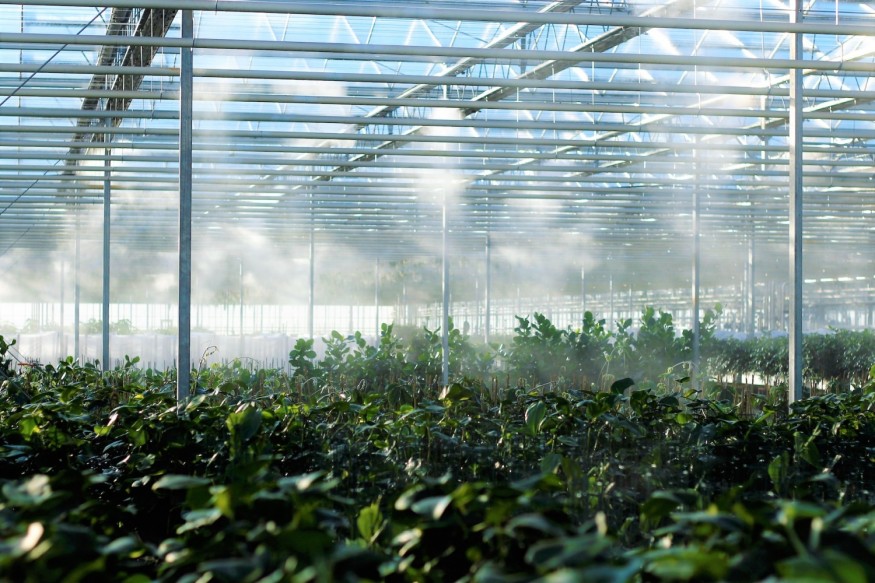
Large greenhouses are becoming increasingly popular in the world of agriculture. These massive structures provide a controlled environment for plants to grow in, allowing farmers to cultivate crops year-round. The benefits of large greenhouses are numerous, ranging from increased crop yields to a more sustainable method of farming. In this article, we will explore the world of large greenhouses and delve into the many advantages they offer to the agricultural industry.
Crops to Grow in Large Greenhouses
Greenhouses can be a fantastic way to grow crops and plants all year round. With the help of a large greenhouse, you can grow a variety of crops that would otherwise not be possible in your region. But what are the best crops to grow in large greenhouses? In this article, we'll explore the top crops that grow best in large greenhouses
1. Tomatoes
Tomatoes are one of the most popular greenhouse crops. They are easy to grow, require a minimal amount of space, and can produce a high yield. When grown in a greenhouse, tomatoes can be harvested year-round, ensuring a steady supply of fresh, juicy tomatoes. They are also great for making sauces, salads, and sandwiches.
2. Cucumbers
Cucumbers are another excellent crop to grow in a large greenhouse. Similar to tomatoes, cucumbers can be grown year-round in a greenhouse. They require a lot of vertical space and can be grown using trellises. Cucumbers are perfect for salads, sandwiches, and pickling.
3. Peppers
Peppers are a great greenhouse crop for those who like a bit of spice in their food. They are easy to grow and require minimal space. Peppers can be harvested year-round and come in a variety of colors and heat levels. They are great for adding flavor and heat to dishes.
4. Eggplants
Eggplants may not be as popular as other greenhouse crops, but they are still a great choice. They require a bit more space than other crops, but they can still be grown easily in a greenhouse. They are perfect for making dips, casseroles, and stir-fries.
5. Lettuce and Leafy Greens
Lettuce and other leafy greens, such as kale and spinach, are perfect for growing in a greenhouse. They are easy to grow and require minimal space. They also grow quickly, allowing for multiple harvests throughout the year. Lettuce and leafy greens are perfect for salads and sandwiches.
6. Herbs
Herbs, such as basil, parsley, and thyme, are perfect for growing in a greenhouse. They require minimal space and can be harvested year-round. Herbs are great for adding flavor to dishes and can be used in a variety of recipes.
7. Flowers
While not a food crop, flowers can still be grown in a large greenhouse. They are perfect for adding beauty and color to your greenhouse. Flowers, such as roses and orchids, can be grown year-round in a greenhouse.
Factors to Consider Before Building a Large Greenhouse
Here are some key considerations to keep in mind before building your dream greenhouse
Site Selection and Preparation
The first step in building a large greenhouse is choosing the right location. You'll want to aim for a spot with maximum sunlight exposure, ideally facing south or southeast. You should also consider factors such as wind direction, drainage, and accessibility.
Before building your greenhouse, you'll need to prepare the site. This may involve clearing the area of trees, leveling the ground, and improving the soil quality. Exaco Greenhouses
You'll also need to ensure that the site is properly drained to prevent water accumulation.
Design and Construction
Once you've selected your site, you'll need to decide on the design and construction of your greenhouse. There are many different designs to choose from, including freestanding, lean-to, and gable. Each design has its own advantages and disadvantages, and you'll need to choose the one that best suits your needs and budget.
When it comes to construction, you'll need to decide on the materials you'll use. Common materials include wood, PVC, and metal. Each material has its own benefits and drawbacks, and you'll need to weigh them carefully before making a decision.
Heating and Ventilation
Greenhouses require adequate heating and ventilation to maintain a healthy growing environment. Depending on your location and climate, you may need to install a heating system to keep your plants warm during the colder months. You'll also need to ensure that your greenhouse has adequate ventilation to prevent overheating and excess humidity.
Irrigation and Water Management
Proper irrigation and water management are essential for the health and growth of your plants. You'll need to install a reliable watering system, such as drip irrigation or sprinklers, and ensure that your greenhouse has adequate drainage to prevent water buildup. You should also consider collecting rainwater to reduce your water bills and improve sustainability.
Lighting and Energy Efficiency
Finally, you'll need to consider lighting and energy efficiency. If you plan on growing plants year-round, you may need to install artificial lighting to supplement natural sunlight. You should also aim for energy efficiency to reduce your energy bills and minimize your environmental impact. This may involve installing insulation, using energy-efficient lighting and heating systems, and choosing energy-efficient materials.
Conclusion
large greenhouses offer numerous benefits and advantages, such as increased crop yields, extended growing seasons, and protection against harsh weather conditions. They also allow for more efficient use of resources, providing a sustainable solution for agriculture. For readers interested in building a large greenhouse, it is important to consider factors such as location, design, and materials. Planning and research are key to ensuring a successful and profitable greenhouse operation. With careful consideration and attention to detail, a large greenhouse can be a valuable asset for any farmer or gardener.
© 2025 NatureWorldNews.com All rights reserved. Do not reproduce without permission.




